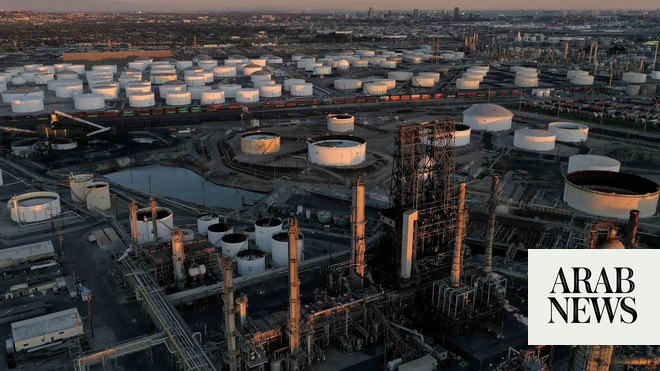
The euro also fell to a 15-month low of 124.39 yen and touched its lowest since mid-2016 against the pound at 82.01 pence
The euro tanked more than 1 percent versus the dollar on Monday and was on track for its biggest three-day loss in two years as soaring oil prices stoked fears of a stagflationary shock that could hammer European recovery hopes.
The single currency’s drop was broad-based, with the currency flirting with parity versus the Swiss franc after having briefly dropped below it in early Asian trading. It fell more than 0.5 percent versus the yen and the Australian dollar.
The conflict in Ukraine and harsh international sanctions on Moscow have sent Russian assets tumbling, while prices of the country’s exports such as precious metals, oil and gas have soared at a time when the global economy was already grappling with inflationary pressures.
Europe is the most vulnerable as it imports as much as 40 percent of its natural gas from Russia and the single currency has become increasingly correlated with oil prices — the higher oil climbs, the more the euro falls as investors fret about higher inflation and the blow to the economy.
“The euro continues to absorb the most pressure of major currencies on the fallout from the war in Ukraine,” said John Hardy, head of FX strategy at Saxo Bank.
In volatile London trading, the euro fell more than 1 percent to $1.0806, a May 2020 low. On a cumulative basis, the single currency has weakened nearly 3 percent versus the greenback in the last three trading sessions, its biggest drop since the pandemic slammed into markets in March 2020.
It is down almost 4 percent since Russia began what it calls a “special military operation” in Ukraine and is not far from testing its 2020 trough of $1.0636.
’MELT-UP’
Oil prices soared again on Monday as the risk of a US and European ban on Russian product and delays in Iranian talks sent prices soaring to the highest levels since 2008.
“The melt-up in commodity prices ramps up the risk of a stagflationary shock for the euro zone and complicates the policy outlook for the ECB,” said an FX strategist at a European Bank in London.
According to Goldman Sachs, a sustained $20 oil rise shock would lower real economic growth in the euro area by 0.6 percent and by 0.3 percent in the United States. But in a more adverse scenario if Russian gas shipments via Ukraine were curtailed, then euro area GDP could fall by as much as 1 percent from gas alone.
The euro also fell to a 15-month low of 124.39 yen and touched its lowest since mid-2016 against the pound at 82.01 pence. Against the Aussie, the euro has lost more than 10 percent over about a month.
Derivative markets pointed to more pain for the single currency. Three-month euro risk reversals plunged to its lowest levels since December 2011, indicating a rush to buy euro puts.
Against a basket of its rivals, the dollar gained 0.5 percent to 99.40, its highest levels since May 2020.











